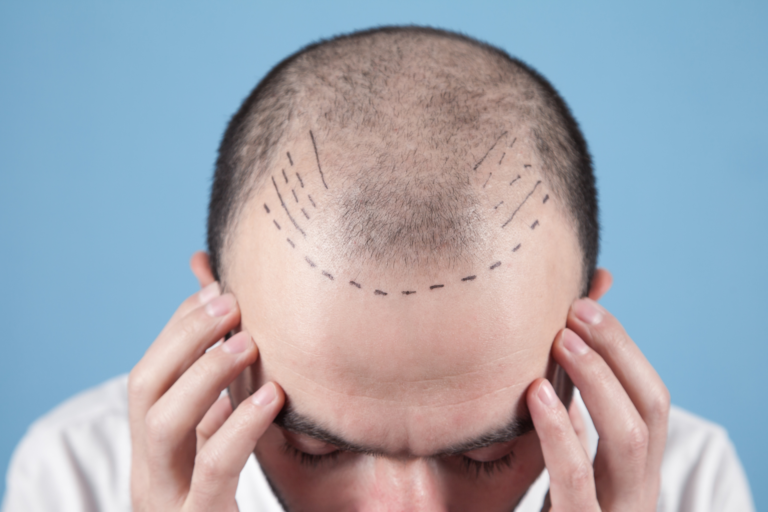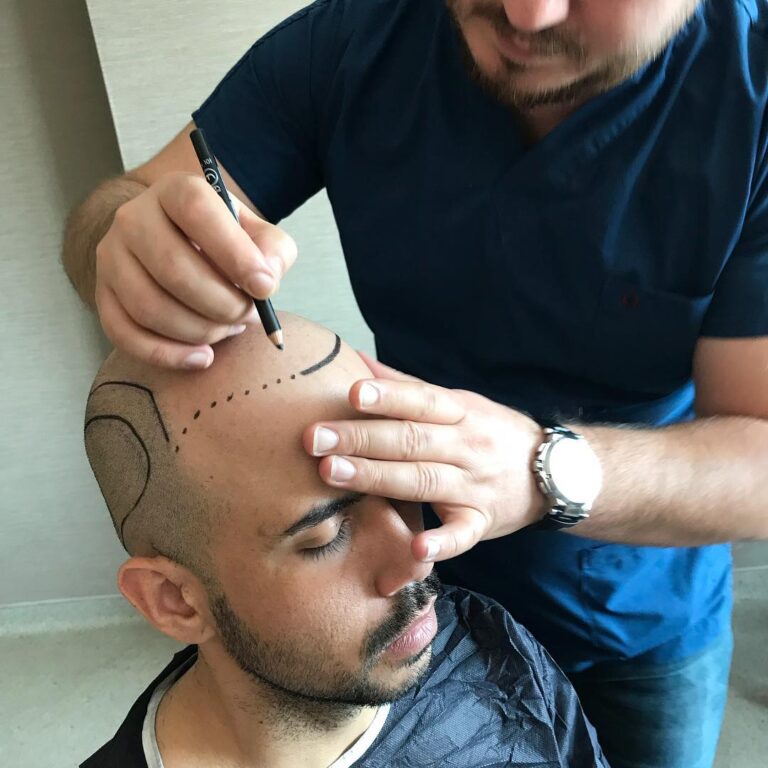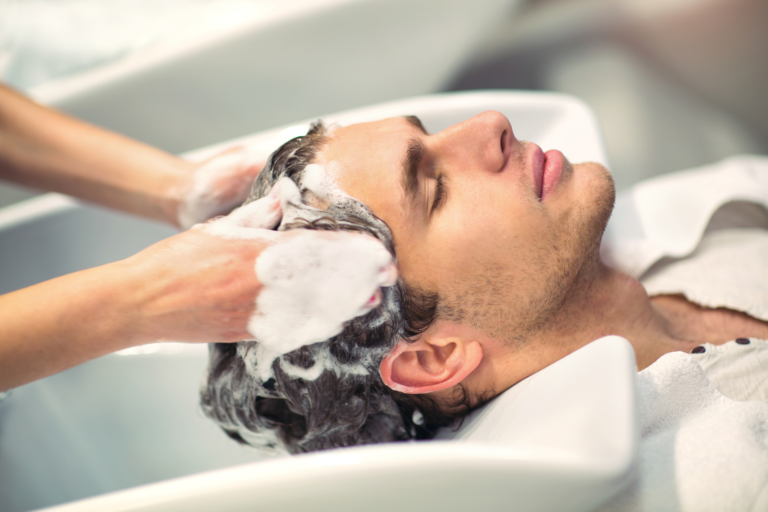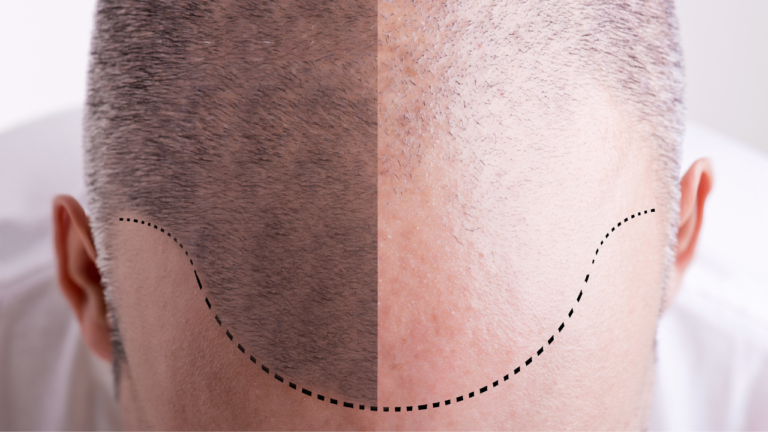HAIR TRANSPLANT AND SCALP DISEASES WITH CURES
Scalp Psoriasis
Psoriasis is a long-term condition that causes a dry, itchy buildup of skin cells that can crack and bleed. It causes your skin to become flaky and you may have psoriasis in different parts of your body. About half of those with psoriasis have psoriasis on their scalp.
As a cure for psoriasis, your doctor may give you a special shampoo or medicine to apply directly to your scalp. You can also take pills to help with inflammation and itching. Another treatment option is to impose natural or artificial ultraviolet light on your skin. This can help relieve painful areas.
Can Psoriasis Patients Have Hair Transplantation?
We should immediately emphasize the most curious point about the subject that hair transplantation can also be done to psoriasis patients. There is no harm in hair transplantation, especially in cases of non-severe psoriasis. Theoretically, exacerbations of psoriasis can be seen after all kinds of surgery, that is, the severity of psoriasis increases. Any trauma to the skin causes psoriasis to get worse (Koebner Phenomenon). Itching of the psoriasis area, even rubbing or touching by hand can worsen the condition. Therefore, it is important to control psoriasis thoroughly with treatment before hair transplantation and other surgeries.
Dry Scalp
Dry scalp sounds like a simple issue to most people. It can be thought that you apply a cream and moisturize it and then problem is resovled. However, if left untreated, it can lead to different results. Your scalp can become itchy and flaky from dryness, and when the skin is cracked or itchy, bacteria can get in and cause an infection. Dry hair is more common in warmer climates and becomes more common as you age. You can also experience this problem if you wash your hair too often or use harsh hair products that remove the natural oils from your scalp.
As a cure for dry scalp, lifestyle changes can make a difference. For example, you can try washing your hair less frequently or using a milder shampoo. In severe cases, or if it’s become inflamed as a result of dryness, your doctor may recommend medication.
Patients with dry scalp can have hair transplant without any problem. Just before the operation, you should consult your doctor and under the scrutiny and consent of your doctor, you can easily have hair transplant.
Dandruff
Small patches of skin can exfoliate from your scalp and leave a certain white fallout on your shoulders. This is called dandruff. Some diseases, such as extremely dry or oily skin, HIV and Parkinson’s disease, can also cause it. You can also have dandruff in response to certain soaps, shampoos, or a fungus on your scalp.
Your treatment for dandruff will depend on the cause. For example, you can easily change cosmetic products if it is reactionary to certain shampoos. You can try an over-the-counter dandruff shampoo. Do not forget to dry your hair well. If it doesn’t go away, consult your doctor for long term solution.
Patients with dry dandruff can have hair transplant without any problem. Just before the operation, you should consult your doctor and under the scrutiny and consent of your doctor, you can easily have hair transplant.
Alopecia (Ringworm)
Alopecia aka ringworm is a fungus that can infect your skin or scalp and cause itchy, scaly, bald areas on your head. It is contagious and you can get it easily from someone else, and it’s usually common in children.
As a cure for alopecia, your doctor may give you oral medications or special shampoos or creams to use on your head. Unless you are caught again, the problem will be completely disappeared after treatment.
Patients with alopecia can have hair transplant without any problem. However, first of all, the treatment of the area with alopecia should be done by specialist doctors. Just before the operation, you should consult your doctor and under the scrutiny and consent of your doctor, you can easily have hair transplant.
Hair Lice
They are tiny insects that live in your hair and feed on blood from your scalp. They sound scary, but they are not dangerous, they are just contagious, annoying, and itchy! Sometimes getting rid of them can also be difficult.
As a cure for lice, special shampoos or lice combs can kill lice and the eggs they lay. You can get some of these over-the-counter, but stronger ones need to be prescribed by your doctor. Your scalp may itch for a while, even after the lice are gone.
Patients with lice can have hair transplant without any problem. Just before the operation, you should consult your doctor and under the scrutiny and consent of your doctor, you can easily have hair transplant.
Seborrheic Dermatic
Seborrheic dermatic skin disease is a disease that causes flaking and shedding on the scalp. People who have this disease actively will not be able to do hair transplant. Firstly, the disease must be treated.
Seborrheic dermatic disease features are active in areas where there are fat cells in the skin. By the way, the exact cause of this skin disease has not been found yet.
While it may not cause distress in many people, it can cause serious distress in some people. The appearance of lesions in the scalp is the typical symptom of the disease.
Lichen Planus
Lichen Planus is a type of parasite that clings to different parts of the body. It is also the name of a inflammatory skin disease. The lesions on the skin can be more or less depending on the person.
People with lichen planus disease cannot have hair transplantation. The average duration of treatment for the disease is 2 years.
It is a skin disease that is generally seen in people aged 30-60 years. Genetic predisposition, stress, hepatitis C, allergies caused by mercury substances used in dental treatments, diseases such as malaria, hypertension and diabetes, some of the diuretic drugs can cause this disease.
They appear as lesions on the scalp and parts of the body. Particularly, lesions on the scalp can be an obstacle to operations. Therefore, it will be beneficial to have the hair transplantation process done after the treatment.
Hair Fungus
Hair fungus is a type of skin infection. It is mostly seen in rural areas and is transmitted from animals. It causes dandruff and inflammation on the scalp.
Treatment of hair fungus is very difficult and takes a long time. It would be helpful to get help from a dermatologist who is an expert on this subject. Because it requires a long-term drug treatment.
People with hair fungus are not suitable for hair transplantation. After treatment, hair transplantation can be done.








